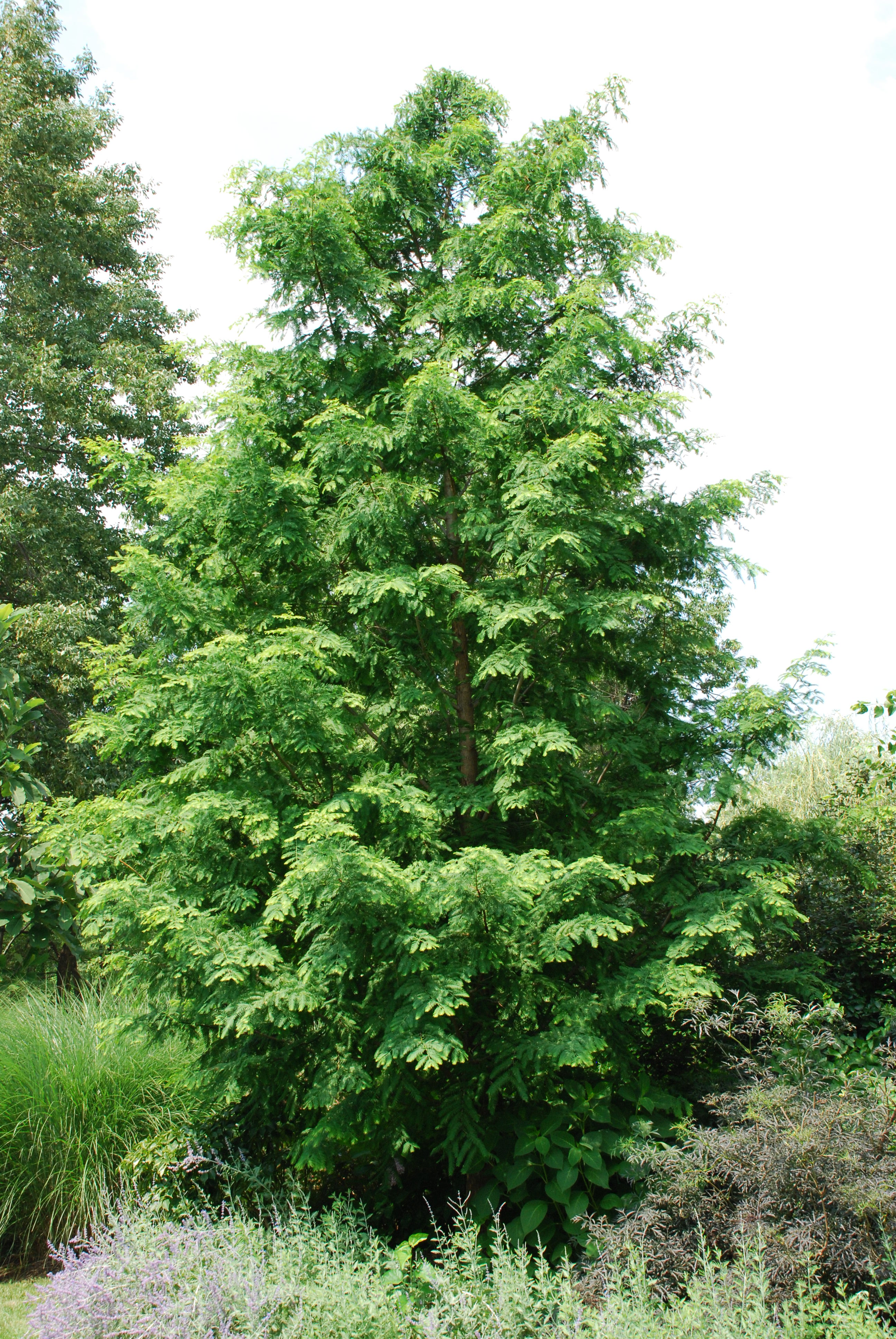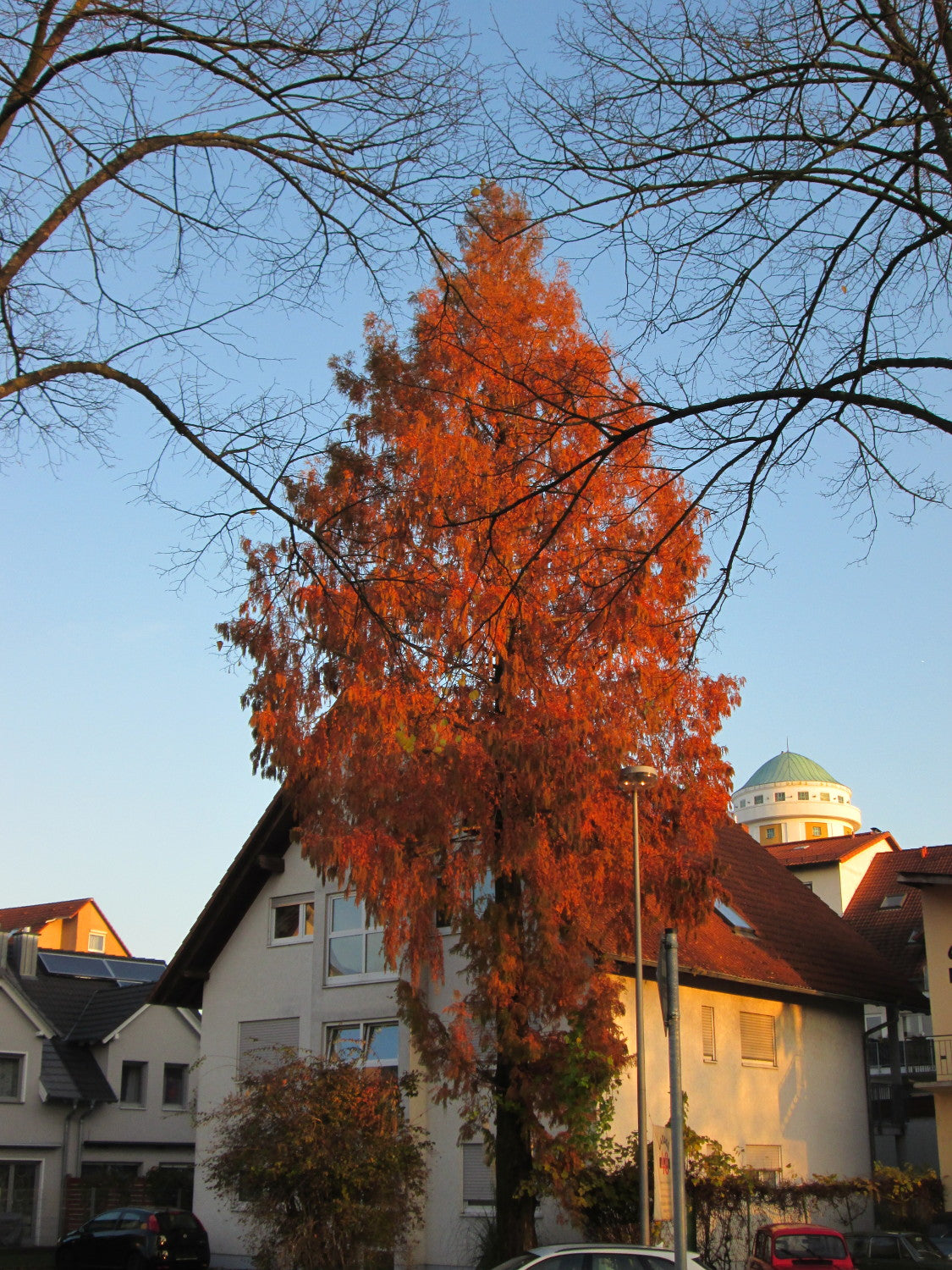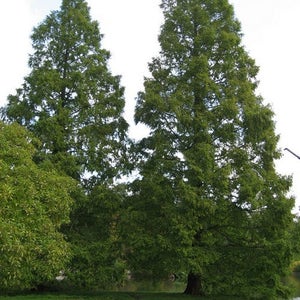
The orange-red to brown trunk base is the most outstanding part of the tree. Although it looks like an evergreen, the needles are deciduous. It is similar in appearance to bald cypress. However, the continued existence of the species has been assured by plantings throughout the temperate zones of the world. Dawn redwood grows in a perfect pyramid 70 to 90 feet tall and was known from fossils before living plants were discovered in China. Find a wide range of this conifer type & Buy Online at Best Price. Trees have been destroyed particularly during the Cultural Revolution. Looking for conifer that grows rapidly Metasequoia or Dawn Redwoods is the right choice. In its natural habitat the dawn redwood is extremely threatened. The biggest problem is the Finnish summer, which is rather too short, cool and dry. Given a long enough autumn to harden off, it is hardy to extreme cold. In the very south of Finland conifer enthusiasts have grown the species with varying success. The 1950s plantings have died, but new plantings have been made in 20 at the warm northern edge of the Alppiruusulaakso (Rhododendron Valley), near beeches, where they are protected from autumn frosts. Autumn colour is a warm light brown.įinland lies at the very extreme of hardiness for the dawn redwood. The tree thrives in warm summers and is best where there is plenty of ground water.

The grass green summer foliage turns pink and golden brown in the autumn before falling. Dawn Redwood trees are straight, tall deciduous conifers originating from China. The dawn redwood’s needle-like leaves are bright fresh green and the trunk red-brown, becoming buttressed with age. Dawn Redwood Metasequoia Glyptostroboides. Both the dawn redwood and the swamp cypresses enjoy moist to wet conditions and loose their needles in winter. The dawn redwood resembles its American relatives the swamp cypresses ( Taxodium). The tallest of these trees are now over 20m (65 ft.)

Mustila Arboretum was among the first to receive seeds, and plants grown from these seeds were sent to Gothenburg Botanic Garden as early as 1952. When I inquired and was told it was a redwood, I. While browsing the tree section of my local nursery, I chose 3 nice Bald Cypress and saw the Dawn Redwood, almost mistaking it for a cypress tree. Understandably, several seed collecting expeditions were made to China in the late 1940s. Metasequoia: Species: glyptostroboides: Item Form: 2-Quart: Zone: 4 - 8: Habit: Upright: Plant Height: 70 ft - 100 ft: Plant Width: 15 ft - 25 ft. Due to the war, it took two or three years to confirm that they were the first living individuals of the genus, the dawn redwoods. But then in the early 1940s some strange trees were discovered in the Hubei province in China. Metasequoia glyptostroboides, the dawn redwood, is not an angiosperm - it is a conifer native to parts of China.Ĭlassification: Plantae, Pinophyta, Pinopsida, Pinales, CupressaceaeĮn.wikipedia.Earlier, the Metasequoia genus was only known through fossils. This domination was due to the evolutionary success of flowers, which are structures that greatly aid angiosperm reproduction. They quickly dominated Earth's terrestrial ecosystems, and have dominated ever since. They first unambiguously appeared in the fossil record during the Cretaceous. Dawn Redwood was discovered during a plant expedition into remote China in the 1940s. It prefers moist, deep, well-drained soils that are slightly acidic. The most conspicuous group of living plants is the angiosperms, the flowering plants. Dawn Redwood is a large, fast-growing, deciduous, pyramidal evergreen tree that grows up to 100 tall with attractive, feathery foliage. Occasional mass extinction events temporarily removed much of Earth's plant ecosystems - this occurred at the Permian-Triassic boundary (251 million years ago) and the Cretaceous-Tertiary boundary (65 million years ago). Earth's continents have been partly to mostly covered with forests ever since the Late Devonian. Purchase a dawn redwood tree sapling to grow as an ornamental plant in large pots or in the ground. Earth's initial forestation event occurred during the Middle to Late Paleozoic.

During the Devonian, the first trees and forests appeared. Fossil root traces in paleosol horizons are known in the Ordovician.

Land plant body fossils are known in Silurian sedimentary rocks - they are small and simple plants (e.g., Cooksonia). The oldest known land plants in the fossil record are Ordovician to Silurian. Most species occupy terrestrial environments, but they also occur in freshwater and saltwater aquatic environments. Plants are multicellular, photosynthesizing eucaryotes. Metasequoia glyptostroboides Hu & Cheng, 1948 - dawn redwood cone (modern) (~2.2 centimeters across) Metasequoia glyptostroboides (dawn redwood cone) 2


 0 kommentar(er)
0 kommentar(er)
